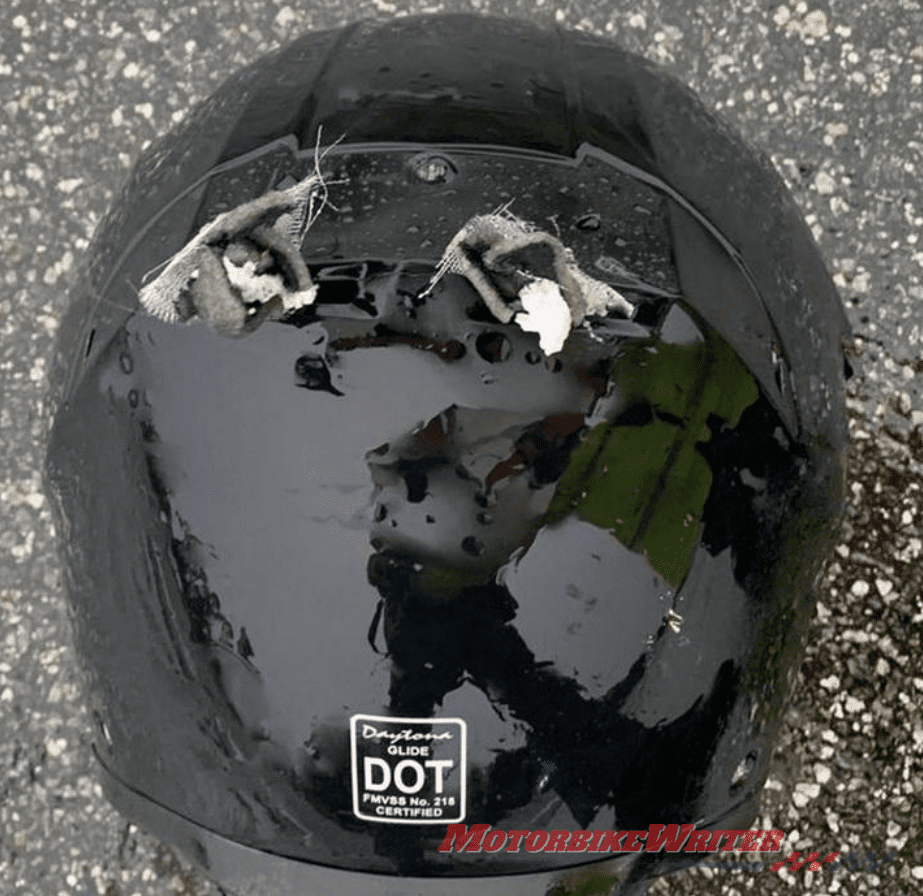Riders on the Storm may be a great rock song, but it is not a good tip as one American motorcyclist unfortunately found last weekend when his helmet was hit by a lightning strike.
Benjamin Austin Lee, 45, is one of 12 unlucky American riders struck and killed by lightning since 2006.
Most have been struck when standing next to their motorcycle while stopped by the side of the road.
However, Benjamin’s helmet was hit by lightning while he was riding on Florida’s Interstate 95 on Sunday, causing him to crash.
It is not yet known if the lightning strike or his crash caused his death, but he was pronounced dead at the scene.
Police posted the above photo of the rider’s helmet showing the damage from the lightning strike.
The sad incident is a reminder that riding in a lightning storm is not advisable.
Lightning strike myths

There are many myths about lightning that need to be struck out first.
The main myth is that rubber tyres ground a vehicle and prevent lightning from striking it.
It is also a myth that if you stand under a tree or picnic shelter or even a service station forecourt roof you are safe. You need to be inside a building with a roof and walls to protect you.
There is also no point in trying to outrun lightning as it travels at nearly half-a-million kilometres-an-hour!
Even the world’s fastest production motorcycle, the aptly named Lightning LS-218, wouldn’t stand a chance even though it can travel at 218mph (about 350km/h), hence the name.

Cars don’t need to outrun a lightning storm as the lightning energy passes safely over the metal roof of the vehicle. However, it can fry the vehicle’s electrics and cause fires.
Drivers and passengers in convertibles and motorcycle riders and pillions have been known to be killed by lightning strikes even while moving.
Lightning safety tips
Five to 10 Australians are killed annually by lightning strikes and about 100 seriously injured. There are no figures available for motorcyclist deaths by lightning.
However unlikely it might be, here are a few tips you can follow to avoid becoming a lightning statistic.
- Keep an eye out for storms by checking the various weather apps on your phone. You may also want to subscribe to a weather alert service that advises of severe weather.
- If a storm is nearby, don’t wait until it hits as lightning can strike up to 25km in front of an advancing storm.
- Pull over and seek shelter in a ditch or somewhere low. Don’t stand next to your bike, a tree, a pole or any other tall or metal conductor of electricity!
- Don’t pull over next to a river, creek, dam, pool or any other body of water. While it will not attract lightning, it will conduct electricity.
- If you pull over in a roadside park with no shelter, you might politely ask a parked driver if you can shelter in their vehicle. But don’t touch anything metal inside the car or talk on your mobile phone.


